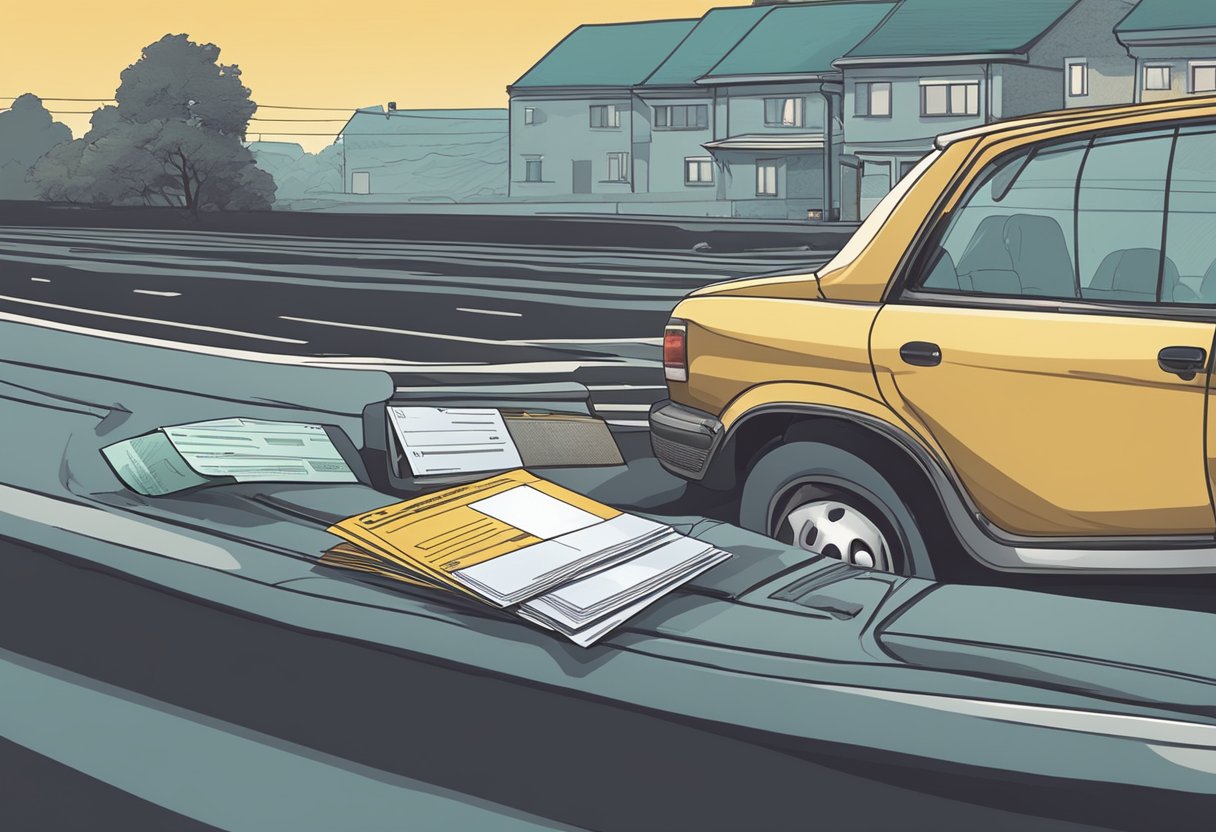
- Insurance
-
-
Most Popular
-
-
- Investing
-
-
Most Popular
-
Best Of
-
-
- Banking
-
-
Best of
-
Banking Reviews
-
Explore More
-
-
-
- Loans
-
-
Most Popular
-
Explore more
-
-
- Credit Cards
- Reviews
- Making Money
How to Find Out If Someone Has Car Insurance: Essential Methods and Tips
After stressful moment following a car accident, can be a daunting task, to wonder how to find out if someone has car insurance. To determine if another driver has car insurance, the simplest approach is to ask them directly for their insurance information. Knowing how to proceed if they are unwilling to share or if you need to verify their coverage details is equally important.
Written by:
Key Takeaways
- Always ask the other driver directly for their insurance information.
- Contact your own insurance company or law enforcement for assistance in verification.
- Knowing the right steps ensures smoother handling of uninsured drivers or hit-and-run incidents.
Table of Contents
Obtaining this information can also be done through other methods, such as contacting your insurance company or law enforcement. They often have the tools and resources needed to verify an individual’s insurance status. Remember that persistence and following the right steps can ease the process.
Failing to secure this information can lead to significant headaches, especially if the other driver is uninsured. Having a clear plan and knowing the necessary actions can save time and prevent additional stress in these situations.
What to Do After a Car Accident
After a car accident, ensure your safety and the safety of others. Move vehicles to a safe location if possible and turn on hazard lights.
Next, call emergency services immediately. Provide accurate details about the location and any injuries.
Exchange information with the other driver. This includes names, contact details, and insurance information.
Take photos of the scene from different angles. Capture damage to both vehicles, road conditions, and any traffic signs.
Speak with witnesses and gather their contact information. Their accounts could be valuable later.
Avoid discussing fault or admitting liability at the scene. Limit conversations to exchanging necessary information.
Notify your insurance company as soon as possible. Provide them with all the collected evidence and details.
Maintain a record of medical treatments if pursuing any injury claims. Keep track of all expenses related to the accident.
Finally, follow up with your insurance company and any legal proceedings as required.
How to Find Out If the At-Fault Driver Has Insurance Coverage

You can determine the insurance status of an at-fault driver through various methods. Key actions involve asking the driver directly, contacting police, or visiting the DMV.
Ask at the Scene of the Accident
Immediately after the accident, request the insurance details from the at-fault driver. This information should be on their insurance card.
Taking a photo of their insurance document ensures you have accurate information. It’s also a good idea to write down these details.
If the driver is uncooperative, document the make, model, and license plate number of their vehicle. This information will be useful for further verification.
Call the Police
Informing the police at the scene provides another method of confirming insurance coverage. Officers routinely collect insurance details from involved parties.
Ask the responding officer for a copy of the accident report. This document will contain the necessary insurance information.
If the police weren’t called at the scene, you can still file a report later. Many jurisdictions have a non-emergency number for such purposes. This ensures the event is officially recorded.
Visit the Department of Motor Vehicles (DMV)
A visit to the DMV can provide verification of the at-fault driver’s insurance coverage. Bring the accident report and any other relevant documents.
Some states offer online services for insurance verification. Check the DMV’s website for availability and instructions.
If in-person, be prepared to fill out necessary forms and potentially pay a small processing fee. The DMV can access the driver’s insurance status based on their vehicle registration details.
What to Do If the Other Driver Doesn’t Have Insurance
If the other driver is uninsured, it’s essential to keep your composure and follow specific steps to protect yourself.
First, call the police and report the accident. An official report will document the incident and the lack of insurance.
Next, collect as much information as possible. Gather the other driver’s name, contact details, and vehicle information. Take photos of the accident scene, damages, and any visible injuries.
Contact your insurance company immediately. Inform them about the situation and provide the gathered information. They will guide you through the next steps.
Consider uninsured motorist coverage. If you have this coverage, it can help pay for damages and medical expenses caused by an uninsured driver.
If you don’t have uninsured motorist coverage, you might need to pay for repairs and medical bills out-of-pocket. Consider seeking legal advice to explore your options, such as filing a lawsuit against the responsible driver.
Sometimes, state victim compensation programs can offer aid in such situations. Research local resources that might help alleviate financial burdens.
Staying calm, thorough, and proactive can save you time and frustration.
What to Do in a Hit-and-Run
First, stay calm and ensure your safety. Move your vehicle to a safe location if possible. Then check for injuries and call 911 for medical assistance.
Try to gather information about the fleeing vehicle. Note the make, model, color, and license plate number, if possible. Look for any distinguishing features that can help identify the vehicle later.
Speak with any witnesses who saw the incident. Obtain their contact information and ask for their account of what happened. This can be useful when filing a police report and claims.
Take photos of the scene, any damage to vehicles, and visible injuries. These photos can serve as evidence when you report the incident to the authorities and your insurance company.
Contact the police immediately after the incident. Filing a report is crucial in hit-and-run cases. Provide them with all the information and evidence you have gathered.
Notify your insurance company as soon as possible. Inform them about the hit-and-run and provide all necessary documentation and information. Your policy might include uninsured motorist coverage that can help with damages.
If you have legal representation, contact your attorney to review your case. They can provide guidance on your rights and any legal steps you should take.
Summary
To find out if someone has car insurance, several methods can be employed. Whether you have the number plate, VIN number, or want to go through the DMV. Moreover, if involved in an accident, exchanging insurance information is a standard protocol. Law enforcement agencies might assist in this process. Ensure privacy laws and regulations are respected in all instances. This helps avoid potential legal issues.
Quick Questions
Yes, many official websites and third-party services offer online checks. These services typically require details like the car’s number plate or VIN number to provide the insurance status. Always use trusted and official sources to avoid incorrect information.
The Vehicle Identification Number (VIN) is another reliable method for checking insurance. VIN-specific databases can provide details about a vehicle’s insurance status. Input the VIN on an authorized platform to access this information.
One of the most straightforward methods is using the car’s number plate. Various online tools and databases allow you to input the number plate to check the insurance status. Ensure that you use a reputable and authorized service to get accurate results.

Join the MoneyMash community!
Sign up to get the latest personal finance news.
© 2025 MoneyMash an Element Road, LLC Company.
MoneyMash is an independent, advertiser-supported site. We may receive compensation when you click to apply for some products using the links that you find on our website. Opinions presented on our website are those of MoneyMash or our team of writers and reviewers who post their own opinions. For more information, please read the full disclosure.
